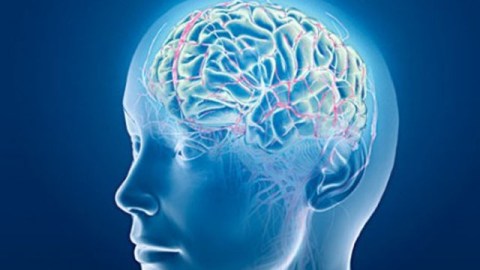Your Brain on Drugs: Dopamine and Addiction

“You can turn your back on a person, but never turn your back on a drug, especially when it’s waving a razor sharp hunting knife in your eye,” wrote gonzo journalist Hunter S. Thompson, no stranger himself to the compelling nature of addiction.
As has been demonstrated many, many, many times over, drug addiction is a powerful force that can take control of the lives of users. In the past, addiction was thought to be a weakness of character, but in recent decades research has increasingly found that addiction to drugs like cocaine, heroin and methamphetamine is a matter of brain chemistry.
Dr. Nora Volkow, the director of the National Institute on Drug Abuse, says that the way a brain becomes addicted to a drug is related to how a drug increases levels of the naturally-occurring neurotransmitter dopamine, which modulates the brain’s ability to perceive reward reinforcement. The pleasure sensation that the brain gets when dopamine levels are elevated creates the motivation for us to proactively perform actions that are indispensable to our survival (like eating or procreation). Dopamine is what conditions us to do the things we need to do.
Using addictive drugs floods the limbic brain with dopamine—taking it up to as much as five or 10 times the normal level. With these levels elevated, the user’s brain begins to associate the drug with an outsize neurochemical reward. Over time, by artificially raising the amount of dopamine our brains think is “normal,” the drugs create a need that only they can meet.
“If a drug produces increases in dopamine in these limbic areas of the brain, then your brain is going to understand that signal as something that is very reinforcing, and will learn it very rapidly,” says Volkow. “And so that the next time you get exposed to that stimuli, your brain already has learned that that’s reinforcing, and you immediately—what we call a type of memory that’s conditioning—will desire that particular drug.” Over time, the consistently high levels of dopamine create plastic changes to the brain, desensitizing neurons so that they are less affected by it, and decreasing the number of receptors. That leads to the process of addiction, wherein a person loses control and is left with an intense drive to compulsively take the drug.
According to Volkow, the reason that dopamine-producing drugs are so addictive is that they have the ability to constantly fill a need for more dopamine. “So a person may take a hit of cocaine, snort it, it increases dopamine, takes a second, it increases dopamine, third, fourth, fifth, sixth. So there’s never that decrease that ultimately leads to the satiety,” she says.
Adam Kepecs, a neuroscientist at Cold Spring Harbor Laboratory says that addiction has to do with the brain’s expectations. An emerging idea, he says, is that drugs basically “hijack” the brain’s normal computational enjoyment and reward mechanisms.
“Let’s say you’re happy about a great chocolate ice cream,” says Kepecs, as an example.”Over time you learn to expect that the chocolate ice cream is really great and you have no more dopamine released in expectation of that when you receive it. Whereas, if you take an addictive drug, you can never learn to expect it because the drug itself will release an extra kick of dopamine. And when that happens, the value of that drug keeps increasing because now you’re learning that ‘Wow my expectations were violated, therefore this must be much more valuable than what I thought before.’ So basically what ends up happening: the dopamine system gets hijacked by these drugs.”
Volkow notes that there are other components to addiction—like genetics and age of exposure—which is why not everyone who takes drugs becomes an addict. She says approximately 50% of the vulnerability of a person to become addicted is genetically determined, and research indicates that if a person is exposed to drugs in early adolescence they are much more likely to become addicted than if they were exposed to the same drugs as an adult.
Takeaway
One of the key functions of the neurotransmitter dopamine is to create feelings of pleasure that our brains associate with necessary physiological actions like eating and procreating. We are driven to perform these vital functions because our brains are conditioned to expect the dopamine rush that accompanies them.
Addictive drugs flood the brain with dopamine and condition us to expect artificially high levels of the neurotransmitter. Over time, the user’s brain requires more dopamine than it can naturally produce, and it becomes dependent on the drug, which never actually satisfies the need it has created.
More Resources
— “What Addicts Need,” 2008 article in Newsweek about how scientists are using insights about neurochemistry to treat addiction.
— “Addictive Research,” 2007 article in TheScientist.com describing the latest
— University of Texas Addiction Science Research and Education Center description of the role dopamine plays in addiction.





